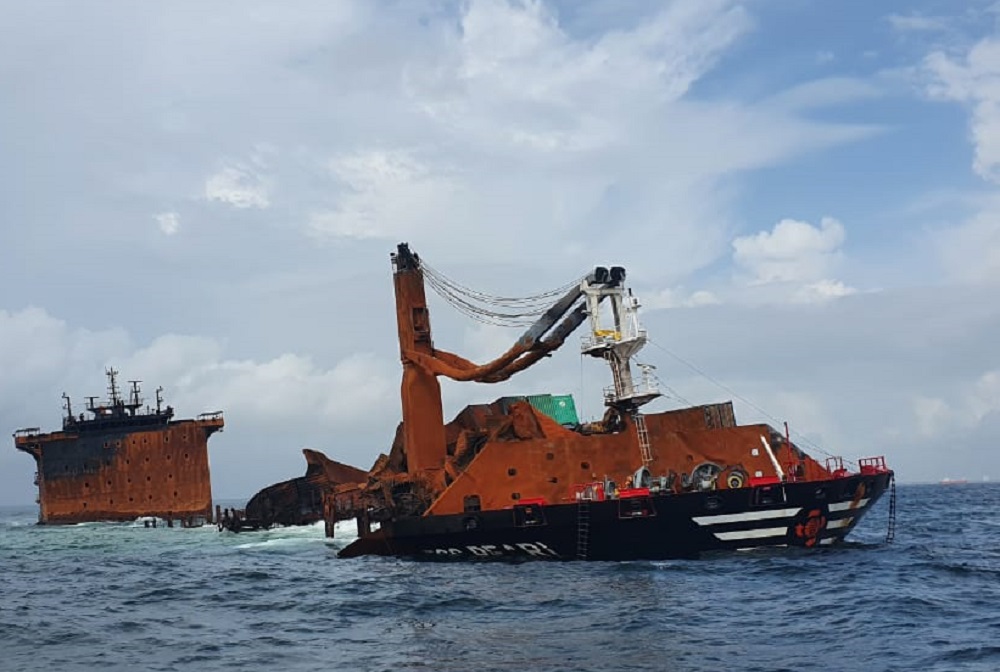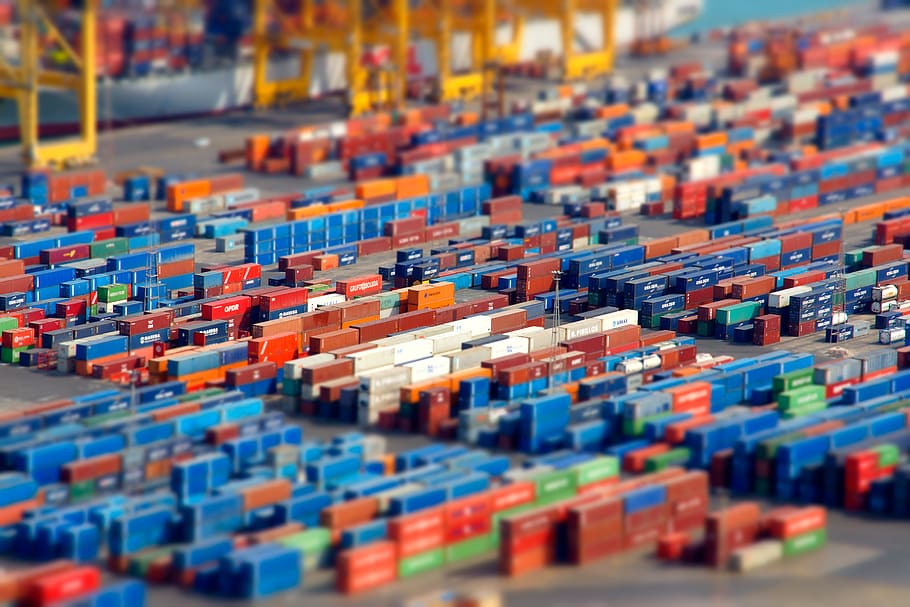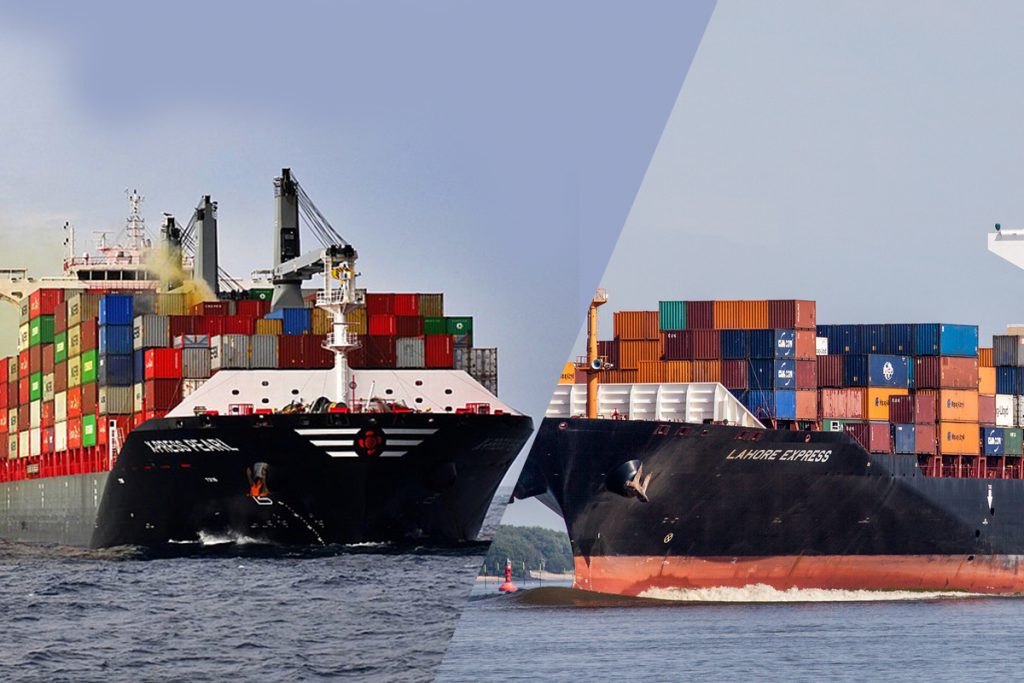Experts label misdeclared and poorly packed dangerous cargo as one of the most significant threats to vessels.
The Government of Sri Lanka is working to expedite the removal of the wreck of the containership X-Press Pearl from its shores while also continuing its efforts to monitor for environmental pollution and damage as well as to receive compensation. A report from the Government committee formed to investigate the damages and oversee the salvage operations details efforts that are expected to continue into 2022.
According to a copy of the report obtained by a local news outlet, the wreck removal arrangements are being coordinated with the Government of Singapore, where the vessel was registered, along with the vessel’s owners, and the Sri Lankan High Commission in Singapore.
The authorities in Singapore reported that a removal plan is being developed in consultation with a group of salvage experts, naval architects, and salvage engineers. Among the efforts that are underway is a modelling of the undersea area and topography in the area around the wreck.

The X-Press Pearl settled and remains sitting upright on the seafloor partially exposed above sea level. The information gathered is being used to formulate a methodology for the removal of the hulk.
The international salvage experts and P&I Club have advised that the removal should not begin until the current monsoon weather season has passed. However, the Sri Lankan authorities are negotiating to expedite the removal process.
In the meantime, an oil sheen has been seen coming from the wreck, but after consultation with the experts, the decision has been made not to use chemicals to treat the sheen. The experts suggested that the chemicals are more dangerous and that the current thin sheen dissolves in the environment. However, chemicals and equipment to fight a more substantial oil spill remain on standby while teams continue to monitor the wreck.
Drones and underwater vehicles are being used to monitor the X-Press Pearl and the Marine Environmental Protection Authority (MEPA) is receiving twice-daily reports. Resolve Marine has been hired as the interim caretaker on site and Sri Lanka Navy divers have also surveyed the wreck.
Using a side-scan survey undertaken by the Indian Navy and the National Aquatic Resources Research and Development Agency, details are being assembled on the scope of the damage to the two main fishing areas. The vessel’s insurers have also hired a survey company to undertake a broader scan of the area. More than 175 square miles however remains closed to all fishing.
On shore, they also continue to do daily surveys of the coast looking for pollution. To date, the report says they have collected 889 metric tons of waste, which was packed into 42 containers and 1,200 jumbo bags. Teams, however, continue to find pollution and specifically the plastic packing materials that were being transported on the X-Press Pearl.
Sri Lanka has assembled an international team, including the US law firm of Arent Fox, to assist with its compensation claims. To date, two interim claims have been filed, and the country has received approximately US$ 3.6 million as part of a first interim payment.

The X-Press Pearl was transporting 1,486 containers from the Middle East with stops in India and Sri Lanka during its voyage to Singapore. A cargo fire was discovered on May 20 and despite initial success, the fire re-ignited and consumed the three-month-old vessel. Fire teams from Sri Lanka, India, and private resources spent more than a week fighting the fire, but the vessel sunk off Colombo after the Government ordered an attempt to move it from the anchorage to deep water. The resulting environmental damage is considered to be the worst in Sri Lanka’s history and expected it is expected to take years to recover.
A potential disaster averted
The Sri Lanka Ports Authority (SLPA) has reported that they assisted in diffusing a potentially dangerous situation aboard a containership after the vessel reported a leak in dangerous cargo it was transporting. While the situation might have been routine, what made it especially poignant was the recent loss of the new vessel the X-Press Pearl off Sri Lanka also due to a leak in dangerous cargo. Experts label misdeclared and poorly packed dangerous cargo as one of the most significant threats to vessels.
In the recent case, the 50,869 dwt containership Seaspan Lahore, operating under charter to Hapag-Lloyd, departed Mundra, India, on July 26 heading westward. Six hours after departure, the captain contacted the ship’s agent reporting that the crew had discovered a leak believed to be nitric acid coming from a container loaded on the ship bound for Africa.
The agent was in touch with the Sri Lanka Ports Authority and the container terminal operated by SAGT. A review of the manifest showed that the container aboard the vessel contained 650 drums of nitric acid, which used in the manufacture of fertilizers and explosives is extremely flammable. The X-Press Pearl was reported to be carrying 25 tons of nitric acid on its final voyage, with ports in the Middle East reportedly refusing to handle the leaking container after it was discovered by her crew.
In the case of the Seaspan Lahore, the Harbourmaster of the SLPA working with the agents reviewed the ship’s manifests and with the captain, the cargo loading plan. They sought to determine the location of the leaking drums and the adjacent cargoes.
The containership Seaspan Lahore on July 26 also reported a leak believed to be nitric acid coming from one of the containers loaded on the ship.
The SLPA Chairman and the Harbourmaster decided to berth the vessel in Colombo. The vessel was diverted, arriving on July 28 and during a two-day operation, the container was off-loaded and opened under the supervision of a trained crew. They repackaged the cargo into new drums and cleaned the containers to ensure that the risk had been mitigated.
“When notified of the decision, Ports and Shipping Minister Rohitha Abeygunawardena gave me his blessings to carry on and I thank him very much for the confidence placed in me,” said SLPA Chairman Capt. Nihal Keppetipola.
The reworking of the cargo was completed with the Port Fire Brigade standing by and with the assistance and participation of SLPA officials and crew, SAGT officials, officials of Hapag-Lloyd Lanka Pvt Ltd., and personnel from Hamka Shipping specialized in the operation. The SLPA Chairman reports that when they entered the container the team said the bottom of the container was already partially eroded raising the potential for a fire. He said if the vessel had delayed even another day, it could have had a fire aboard.
They thanked everyone involved in the successful operation noting that the Colombo Port has experienced officers and is geared to handle such situations and has successfully carried out such operations on several occasions in the past. The Seaspan Lahore departed Colombo on July 30 and has resumed its voyage to Durban, South Africa, where it is expected to arrive on August 10.

Containers lost at sea
Shipping containers which topple off the open decks of ships and are lost in the sea pose a major safety and environmental threat, according to a recent report analyzing trends in shipping by the World Shipping Council.
The report , released in 2020, showed that in the most recent period between 2017 and 2019, an average of 779 shipping containers were lost at sea annually. It is clear that 2020 was a stand-out year in many ways, with the emergence of Covid-19 impacting almost every aspect of life across the globe. Unfortunately, it also meant record-breaking figures as far as the amount of shipping containers lost at sea is concerned.
However, such numbers have been high for years, with the World Shipping Council reckoning that an average of 1,382 containers sink into the abyss of the sea annually. This is a disaster for the shipping industry, with lost containers meaning higher costs, potentially dangerous working conditions for ship workers, and environmental concerns.
Shipping container accidents made news worldwide after the ONE Apus ship fiasco, wherein the vessel sailing to Kobe, Japan, met gale-force winds in the Pacific and lost a huge number of containers. The 364-metre (1,194 foot) ship went through very rough weather which culminated in around 1,800 containers which were being brought to Japan falling off its decks.
Images from the incident went viral, showing the containers strewn across the ship and severely damaged. The most recent incident to which shipping experts can compare the scale of this accident was in 2013, when the MOL Comfort split into two and sank with more than 4,000 containers on board.
Bad weather conditions and the waves they cause are the main reason for lost shipping containers. Although ships and their crew try their best to secure containers to the boat – and there are new technologies constantly being developed to improve this process – this is not a fail-safe solution.
Captains and new forecasting technology also work to steer the ship along the safest route, but sometimes bad weather is unavoidable. This is particularly the case since there are strict dates and times during which ships must arrive at their destination, meaning that there is little margin for diverting the ship in order to avoid bad weather.
However, if winds and waves get to a certain level of strength, there is almost nothing the crew can do to fully prevent cargo from falling off the ship.
Misdeclaration of weight, improper packing of cargo, improper stowage, twist locks issues or a lack of maintenance of the containers are other risk factors which can cause containers to be lost at sea.
Although many believe shipping containers can float, this is not accurate, as most of them are not watertight. Some may last on the surface of the ocean for longer than others, and there are pictures and videos of containers floating up to 15 months after they have been lost at sea.
Views expressed in this essay are the author’s own and do not express the views or opinions of Sri Lanka Ports Authority
(Courtesy: Daily News)























